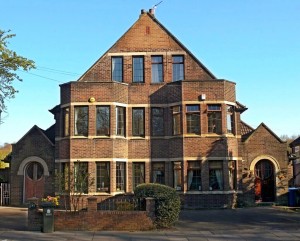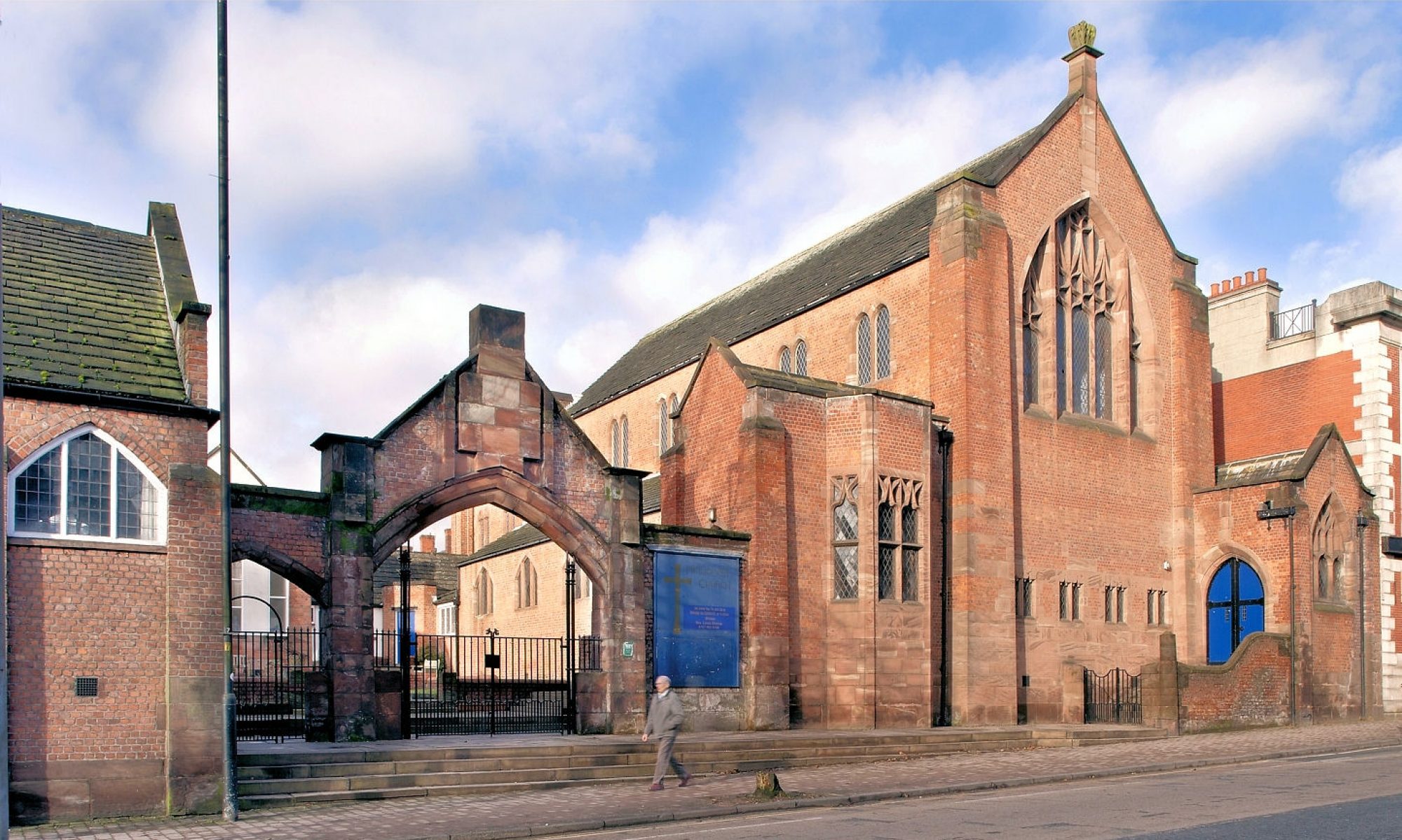 In 1912 Edgar Wood built his final pair of semi-detached houses, 165–167 Manchester Old Road, Middleton, adjacent to his very first pair, West Lea of 1887. In doing so, he created one of the most unusual semis of his career – a striking building that fascinates everyone who takes time to look at it. The quality of the design and the thought that went into it, is outstanding.
In 1912 Edgar Wood built his final pair of semi-detached houses, 165–167 Manchester Old Road, Middleton, adjacent to his very first pair, West Lea of 1887. In doing so, he created one of the most unusual semis of his career – a striking building that fascinates everyone who takes time to look at it. The quality of the design and the thought that went into it, is outstanding.
Treating West Lea as a starting point, Edgar Wood derived from it the pitch of the gables, the string courses and general symmetry. He combined these with an abstract motif, a triangle, which shaped the outline of the main elevation. To achieve this he allowed the roofs of two outer entrance porches to continue the visual line of the main roof downwards towards the ground.
The main fenestration, however, was subsumed within a rectangle formed by a pair of two-storey bays, with two lines of strip windows wrapping around the bays. These are of Georgian proportion, subdivided into twelve rectangular quarries per window. The top outer corners of the bays protrude from the diagonal roof-line, thereby creating the outline of a kneeled gable, a Wood leitmotif. Finally, the shape of the door glazing, door heads and garden entrances (now demolished) is circular, so that Edgar Wood created the whole façade of the building from a series of simple triangles, rectangles and circles; an extraordinary reinterpretation of a traditional semi-detached house using the architectual language of the future modern movement.


